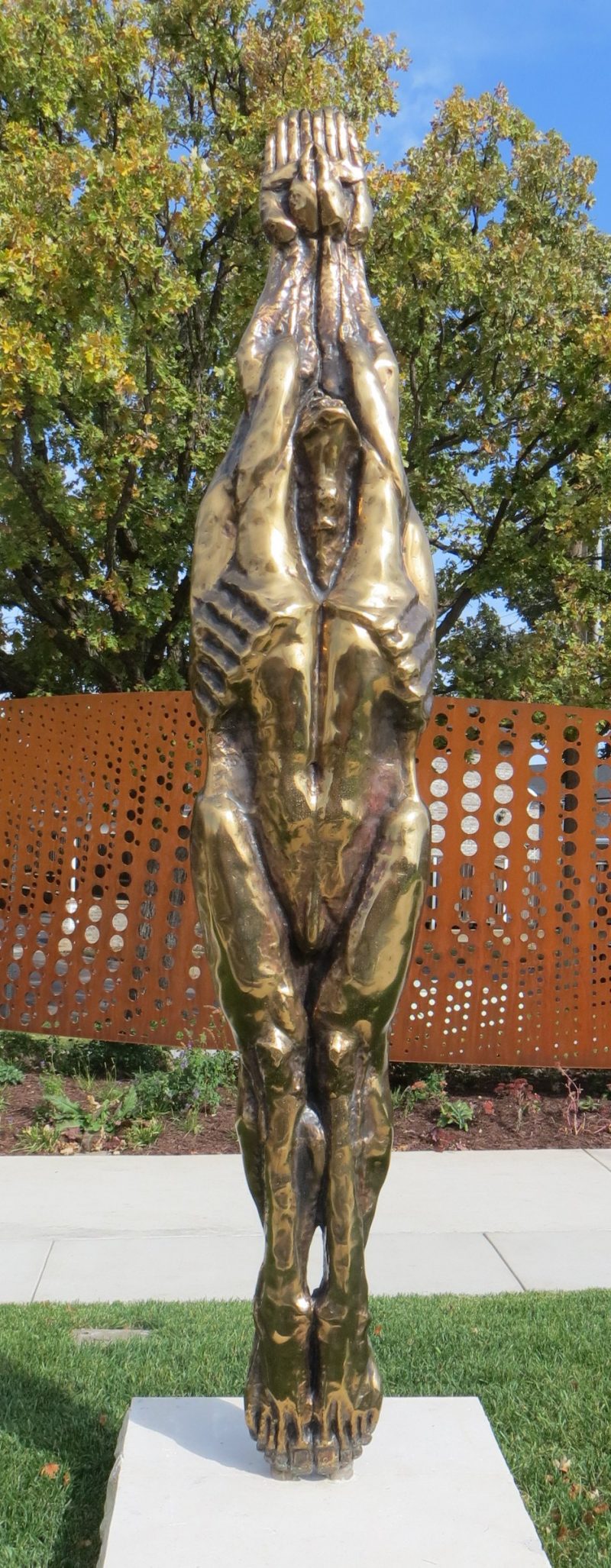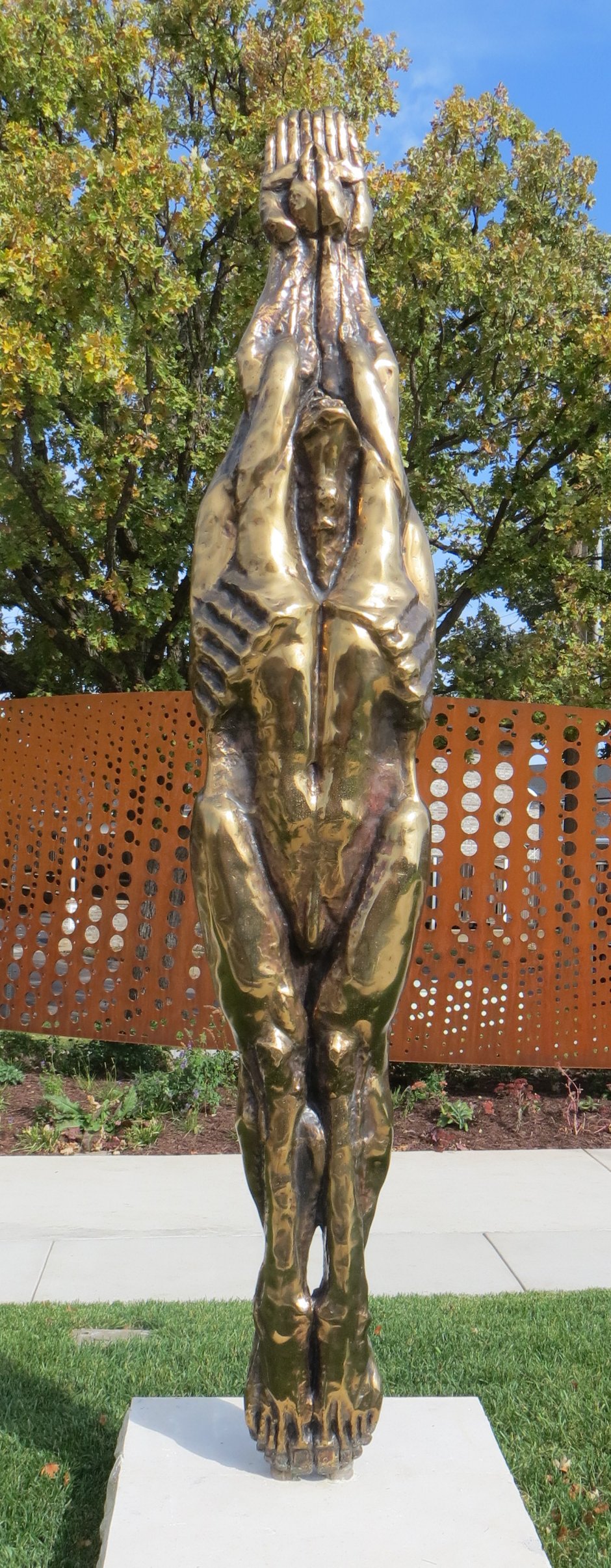
Knife Man
Deckard, John Silk
1977
Artwork Information
-
Title:
Knife Man
-
Artist:
Deckard, John Silk
-
Artist Bio:
American, 1938–1994
-
Date:
1977
-
Medium:
Bronze
-
Dimensions:
115 x 20 x 13 inches
-
Credit Line:
Wichita Art Museum, Museum purchase, Wichita Art Museum Members Foundation
-
Object Number:
1977.75
-
Display:
Currently on Display
About the Artwork
John Silk Deckard’s Knife Man, a nude male cast bronze sculpture nearly 10 feet in height, was commissioned in 1976 for permanent installation on the sculpture deck of the new Wichita Art Museum. Actually the image has repeatedly appeared in a somewhat modified form in many of Deckard’s prints and drawings during the past 25 years. And indeed, essentially the same image appeared in antiquity as the bound mythological figure of Marsyas and again in the 15th century Italian Renaissance, often in a social and political propagandizing context.
In the instance of Knife Man, Deckard’s original objective was to design a bronze figure approximating the elementary geometric form of a knife blade or sword. To accomplish this, the modeled figure was necessarily elongated, and the complete body form flattened in a stretched-out position. What we see therefore is a figure, which stands erect, balanced on the toes of its extended feet with ankles brought together and with both arms raised together in a vertical position high above the shoulders so that hands and wrists are linked as if bound. The head is thrown back and cradled between the upraised shoulders and arms, obscuring the face but emphasizing the long neck. The body thus assumes the stance of a diver and displays the potential of piercing just as a knife or sword pierces when forcefully thrust into an object. At the same time, the stretched elongation of the body has caused the rib-cage to project prominently while the abdomen sinks deeply into the body creating heavy dark shadows that contrast sharply with the glossy highlights that play across the adjacent exaggeratedly knotty muscles. Clearly the impression of a tortured being experiencing physical agony is expressed. And it is of course the combination of these elements — the erect posture of the figure, the suggestion of physical suffering, and the knife metaphor — that clearly associates this work both in form and in symbolic meaning with ancient renderings of the mythological figure of Marsyas about to be flayed by Apollo as punishment for insolence.
A most distinguishing aspect of this work is the fact that man is represented here as a weapon that serves as the instrument of his own destruction, or in Marshall McLuhan’s terms, a weapon that is actually an extension of himself. Yet this figure has a particularly commanding presence and as we view it, we see not only the mournfully dreary image of death and destruction but also a sense of upward thrust, of uplift traditionally associated with the creative life force. And this notion is especially significant here inasmuch as the same figure which suggests self-destructive impulses concomitantly suggests a re-awakening and revival. Thus, both the idea of death and that of rebirth combine in a single artistic statement convincingly communicating the human urge toward a balanced state between life and death, the two opposing poles of being.
John Silk Deckard was born in Erie, Pennsylvania in 1938. He studied formally at several noted art schools including the Pennsylvania Academy of Fine Arts and the Pratt Graphic Art Center. Throughout the 1950s and the 1960s he successfully established himself as a highly skilled printmaker and has produced well over 150 individual drypoint engravings. Since the early ’70s his interest has shifted from the print medium to cast bronze sculptures. Certainly, one of his most significant works is Knife Man. Another is a massive exterior sculpture titled Soul Survivor which stands before the entrance of the Erie Art Museum. Other large sculptures are included in major public and private collections across the United States. Deckard maintains both his studio and his residence in Erie, Pennsylvania.
